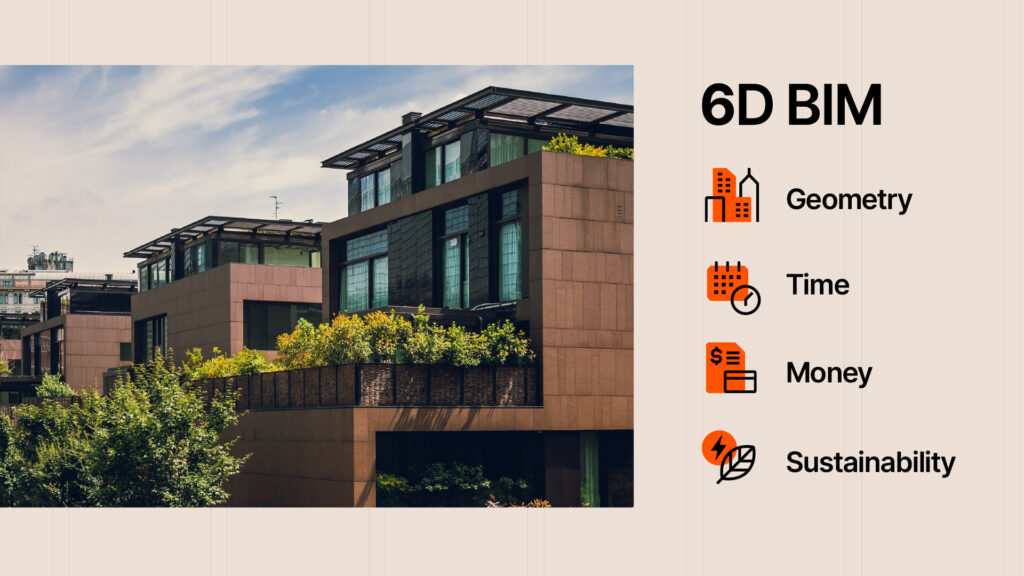— 13 min read
Managing a Construction Budget: Keys to Successful Project Delivery
Last Updated Nov 15, 2024
Last Updated Nov 15, 2024

In construction, where every penny counts and the unexpected is expected, a well-managed budget is essential for finishing a project successfully. More than just setting up initial figures, budgeting is a constant process — it requires ongoing attention and the flexibility to adjust as project demands change.
A construction budget is the total estimated cost of a project, typically broken out into cost codes based on the scope of work and specifications. It embodies a practical approach in construction by balancing incoming funds with the outflow of expenditures.
A well-thought-out budget that skillfully handles the complexities of construction finance can make all the difference, giving a project the solid financial foundation it needs to thrive and ensuring that the project is completed within its financial limits.
This article explores the essentials of a construction budget, covering its definition, how to create one, influencing factors, budget management strategies and common challenges.
Table of contents
Understanding Construction Budgets
In construction finance, the budget provides a detailed fiscal roadmap, ensuring that the project is financially planned and executed within its allotted resources.
The primary function of a construction budget is to lay out the necessary funding for a project, breaking down projected costs and available funds over time. This includes tracking initial budgets, any adjustments made as the project unfolds, and expenses such as subcontractor payments, unforeseen costs not included in contracts, provisions for contingencies and assorted fees.
A well-structured budget serves as a financial compass, ensuring project completion in congruence with the pre-established budget and meeting all required standards and deadlines. It allows for ongoing monitoring and reallocation of funds, maintaining financial transparency and control at every phase. While a global budget covers the entire project, it's typical to have specific allocations for different elements, such as concrete work or door installation, allowing each line item to contribute to the project's overall financial strategy.
The Role of the Construction Budget on Projects
A construction budget functions as a financial roadmap, providing a clear outline of the financial direction of the project. It equips project managers and stakeholders with the ability to make informed decisions, prioritize spending, and adjust plans to remain within budget constraints. A thoroughly prepared budget also serves as an essential instrument for securing financing by demonstrating a project's viability to investors or lenders.
Components of a Construction Budget
Several elements make up a construction budget and significantly influence the project's financial health:
- Direct costs: These include expenses that directly impact the construction, such as labor, materials and equipment rentals*
- Indirect costs: These are the costs associated with supporting the construction process, like permits, insurance, and site security*
- Contingency funds: A contingency reserve addresses the unpredictable nature of construction, covering unforeseen costs or overruns
- Profit margin: A budget also reflects the profit expected from the project, a critical measure to track for the duration of the project
*In construction, direct and indirect costs are often called hard and soft costs.
By dissecting the construction budgeting process, it becomes evident that a budget is not just about tracking expenses. It's a strategic tool that ensures projects are financially feasible, risks are managed, and resources are allocated efficiently. Understanding budgeting is the first step towards successful construction project management, laying the groundwork for projects that are completed within budget, on time and to the required quality standards.
How to Create a Construction Budget
Let’s explore the essential steps to develop a robust construction budget, focusing on the methodologies for accurate financial forecasting and strategic resource allocation.
1. Define the project's scope and objectives.
The foundation of a successful construction budget is deeply rooted in the clear delineation of the project's scope and its overarching objectives. Central to this process is the development of a Work Breakdown Structure (WBS), a comprehensive framework that breaks the project down into smaller, more manageable components or tasks. This step involves meticulously outlining the specific activities and expected results, ensuring that every aspect of the project is accounted for in the budgetary framework.
By employing a WBS, construction firms can achieve a granular understanding of the project's requirements, facilitating a more accurate and thorough budgeting process. This structured approach ensures that the budget covers every detail of the project's scope, from the initial kickoff to the final touches, aligning financial planning with the project's desired outcomes.
2. Estimate project costs.
Based on the WBS, estimate all project costs, considering labor, subcontractor expenses, materials, equipment and overhead costs. These costs include:
- Labor costs: Estimating the wages for all workers involved in the project, from construction crews to supervisory personnel
- Subcontractor costs: Calculating the expenses related to hiring subcontractors for specialized tasks that the general contractor cannot perform. This includes costs for expertise in areas such as electrical, plumbing, and HVAC systems, ensuring these critical components are factored into the overall budget.
- Material costs: Calculating the cost of all materials required for the project, including quantities, types and prices
- Equipment costs: Accounting for the cost of purchasing or renting construction equipment necessary for project completion
- Overhead costs: Including indirect costs such as permits, insurance, site security and any other expenses not directly tied to physical construction activities
This detailed estimation process, grounded in the Work Breakdown Structure (WBS), ensures a comprehensive financial plan that aligns with the project's scope and objectives.
3. Calculate Expected Profit
After gaining a clear understanding of the project's scope and the associated costs, the next critical step in the construction budgeting process is calculating profit. This is achieved by subtracting the total estimated costs from the projected revenue, providing a strategic insight into the financial success of the project.
Revenue - Total Costs = Profit
Revenue equals the total funds received from the funding source plus any authorized changes, while total costs comprise the sum of subcontractor and purchase order expenses plus costs to date.
By meticulously identifying the scope, estimating costs, and calculating expected profits, a construction budget is created that not only ensures the project's financial feasibility but also supports alignment with overarching business goals.
Factors Influencing Construction Budgets
Construction budgeting requires forecasting — meaning the budget must account for unknowns and variables that change over time, requiring constant adaptation and reevaluation.
These elements not only affect the initial budgeting process but also have the potential to cause fluctuations throughout the project's lifecycle. Understanding these factors is key when creating a flexible and realistic budget that can adapt to changing circumstances. Here are some of the key influencers:
Market Trends and Material Costs
The cost of materials is a primary driver of construction budgets, and these costs are heavily influenced by market trends. Fluctuations in supply and demand, geopolitical events, and economic conditions can all cause material prices to vary significantly over time. Keeping a close eye on these trends can help project managers anticipate changes in costs and adjust their budgets accordingly.
Geographic and Environmental Factors
The location of a construction project plays a significant role in determining its budget. Geographic and environmental factors such as terrain, climate, and accessibility can all influence construction methods, material choices, and ultimately, costs. For example, building in a flood-prone area may require additional foundation work and waterproofing measures, increasing the overall budget.
Regulatory and Compliance Costs
Every construction project must adhere to a set of regulatory and compliance standards, which can vary widely depending on the authority having jurisdiction (AHJ). These regulations cover a range of areas, including building codes, environmental protections, and worker safety. The costs associated with obtaining permits, conducting inspections, and ensuring compliance with all relevant laws and regulations can be substantial and must be factored into the construction budget.
By understanding the nuisances of these factors, project managers can develop more accurate and reliable construction budgets. This foresight not only helps in mitigating risks but also in ensuring that the project can proceed smoothly without unexpected financial hurdles, aligning both project timeline and financial objectives.
Stay updated on what’s happening in construction.
Subscribe to Blueprint, Procore’s free construction newsletter, to get content from industry experts delivered straight to your inbox.

Strategies and Best Practices for Creating Accurate Construction Budgets
Effective budgeting in construction involves various strategies and best practices designed to optimize resource allocation, minimize costs, and enhance financial performance. Here are some key strategies and best practices for construction budgeting:
Budget early.
Starting the budgeting process early is vital for nailing down all potential costs and building a firm financial base for any construction project. Using a Work Breakdown Structure (WBS) helps break down the project into smaller, more manageable sections, each with its own financial value, as outlined in the schedule of values (SOV).
This approach leads to more accurate cost estimates and better tracking. It ensures every detail of the project, from the nuts and bolts like materials and labor to the bigger picture items like equipment and services, is included in the budget. With the budget integrated right from the start and carefully checked against the WBS, the project stands on a solid financial footing, greatly reducing the chance of unexpected costs and setting the stage for a successful finish within budget.
Use historical data.
Utilizing historical data from similar projects capitalizes on previous experiences and outcomes to shape current cost estimates and guide budget planning efforts. By analyzing previous projects, businesses can gain valuable insights regarding cost overruns, areas to realize efficiencies and opportunities for savings.
This historical perspective not only enhances the accuracy of budget forecasts but also provides a solid foundation for making informed financial decisions. Incorporating lessons learned from past projects helps avoid previous pitfalls and capitalize on successful strategies, thereby streamlining the budgeting process and improving overall financial management on construction projects.
Incorporate a contingency fund.
Incorporating a contingency fund into the construction budget can help to manage unforeseen costs and overruns effectively. It acts as a financial safeguard designed to address unexpected expenses that arise during the project, ensuring that such surprises do not derail the financial stability or completion timeline.
The allocated amount for this contingency fund should be carefully calculated based on the project's complexity and inherent risk profile, usually somewhere between 5% and 20% of the total budget. This strategic set-aside allows construction firms to navigate uncertainties with confidence, maintaining project momentum even in the face of unforeseen challenges. By planning for the unexpected, construction projects can adhere more closely to their financial targets, enhancing overall project management and outcomes.
Leverage technology.
Embracing construction management software and budgeting tools can significantly streamline budget creation, continuous monitoring, and detailed cost reporting. These digital platforms provide real-time data access, which can improve informed decision-making and strengthen financial oversight. When integrated into the budgeting process, these tools allow construction firms to manage their finances with greater precision and proactivity. This technology revolutionizes budget management, simplifying the task of keeping projects within their financial boundaries and swiftly responding to any project scope changes or shifts in market conditions.
Review the budget regularly.
Continuous oversight, enhanced by regular review and the integration of Work-in-Progress (WIP) accounting, allows for the identification of discrepancies between projected and actual expenses and enables timely adjustments to the budget. WIP accounting, in particular, offers a granular view of ongoing costs and project progress, providing valuable data for these reviews.
By regularly revisiting and revising the budget in response to real-world spending and updated estimates, project managers can ensure that the financial plan remains in sync with the project's progress. Such proactive financial management not only prevents cost overruns but also ensures that the project adheres to its financial constraints, ultimately contributing to its successful completion within the established budgetary boundaries.
Challenges in Establishing and Managing a Construction Budget
Effective construction budget management lies at the intersection of precise planning, continuous adaptation, and robust financial oversight. From accurately forecasting costs to adapting to unexpected changes, the process of establishing and managing demands a high level of precision and flexibility.
Misallocation of Job Costs
Failure to accurately track costs to the correct cost codes within job costing systems can obscure the true financial status of a project, making it difficult to assess where funds are being spent and to what extent they align with the planned budget. When expenses are not correctly categorized, it complicates the process of financial analysis, hindering the ability to identify areas of overspending or to adjust strategies proactively.
A lack of precise cost allocation can lead to budget overruns and diminish the overall control construction firms have over the financial health of their projects. Implementing rigorous tracking protocols and ensuring that all team members are trained on the importance of accurate cost coding are essential steps toward mitigating this challenge and maintaining a healthy project budget.
Navigating Unexpected Costs
Project budgets must be able to absorb the shock of unexpected costs, which can spring from countless sources, putting financial plans to the test. Traditional budgeting techniques are often insufficient on their own to handle these surprises.
Strategic incorporation of contingency funds into the budget is a vital practice for managing these unforeseen expenses. These reserves act as a financial safety net, ensuring that projects remain financially stable despite unanticipated costs.
Additionally, force majeure clauses in contracts are critical for legal preparedness. These clauses shield parties from liability in the face of extraordinary events that are beyond anyone's control, such as natural disasters, labor strikes, or sudden legal changes. The strategic use of such financial and legal safeguards forms a robust defense that equips construction projects to manage surprise expenditures, maintaining financial solidity amidst the unpredictable nature of the construction sector.
Underestimating Costs
The issue of underestimating costs stems from an initial financial planning phase that fails to accurately capture the full scope of project expenses or adequately anticipate the potential for unforeseen costs. Underestimation can significantly strain the budget, leading to financial overextensions that jeopardize the project's completion and overall financial health.
Addressing this challenge requires a combination of rigorous cost analysis, continuous monitoring, and the integration of flexible budgeting strategies that can adapt to evolving project needs and unexpected financial demands.
Construction Budgeting: A Case Study
After years of adhering to the practice of allocating 1% of its budget for labor costs, a construction firm decides to delve into historical data for deeper insights. Upon review, they found that the actual labor costs consistently averaged no less than 2.5% across all projects. This stark discrepancy highlighted the critical importance of comparing budget projections with actual spending.
By leveraging this data, the firm was able to recalibrate its budgeting practices for labor costs, aligning them more closely with reality. Not only did this adjustment serve to protect profit margins for future projects, but it also provided a more accurate financial framework for project managers to work with. This strategic move exemplifies proactive financial management, where an organization learns from its past to improve its forecasting technique, ultimately leading to more financially sound construction projects.
Proactive Budget Management
Effective construction budget management stands as a pillar of project success, anchored in the ability to foresee and adapt to the industry's inherent unpredictability. From the meticulous crafting of a Work Breakdown Structure to the strategic inclusion of contingency reserves and force majeure clauses, these practices offer a blueprint for navigating the complex fiscal currents of construction projects.
Integrating advanced budgeting tools and construction management software further refines this process, enabling real-time tracking and data-driven decision-making. With these resources at their disposal, construction professionals are equipped to maintain financial discipline, anticipate and respond to changes, and ensure that projects culminate within their predetermined financial parameters. Ultimately, the goal is clear: to deliver projects that stand firm in their structure and fiscal soundness, completed on time and within budget.
Was this article helpful?
Thank you for your submission.
100%
0%
You voted that this article was . Was this a mistake? If so, change your vote here.
Scroll less, learn more about construction.
Subscribe to The Blueprint, Procore’s construction newsletter, to get content from industry experts delivered straight to your inbox.
By clicking this button, you agree to our Privacy Notice and Terms of Service.
Categories:
Tags:
Written by
TJ Forbes
16 articles
TJ Forbes is a Senior Solutions Engineer at Procore, specializing in financials products, analytics, ERP integrations, workflows, reporting and accounting solutions. He previously worked as a financial manager and project accountant for Stiles, a commercial real estate firm in Ft. Lauderdale. TJ holds a Masters in Financial Management from Southern Adventist University.
View profileTaylor Riso
73 articles
Taylor Riso is a marketing professional with more than 10 years of experience in the construction industry. Skilled in content development and marketing strategies, she leverages her diverse experience to help professionals in the built environment. She currently resides in Portland, Oregon.
View profileExplore more helpful resources

Modular Construction and MEP: A Collaborative Pairing
In an age of supply chain disruptions, workforce shortages, and rising material costs, off-site construction — including modular construction methods and prefabricated materials — is surfacing as a multipurpose solution....

Connected Construction: Transforming the Industry Through Integration
Construction projects are becoming increasingly complex, so companies need to innovate to accurately and profitably complete these modern structures. Connected construction — using technology and data to improve communication, processes...

Off-Site Construction: Prefab vs. Modular
As the construction world becomes ever more competitive, deadlines get tighter and the margin for error gets slimmer, project owners around the world are always looking for an edge. Thanks...

The Role of BIM in Sustainable Construction
Building information modeling (BIM) is transforming the architecture, engineering, and construction (AEC) industry. With this kind of sophisticated modeling, the industry has shifted from designing in 2D to 3D. This helps...